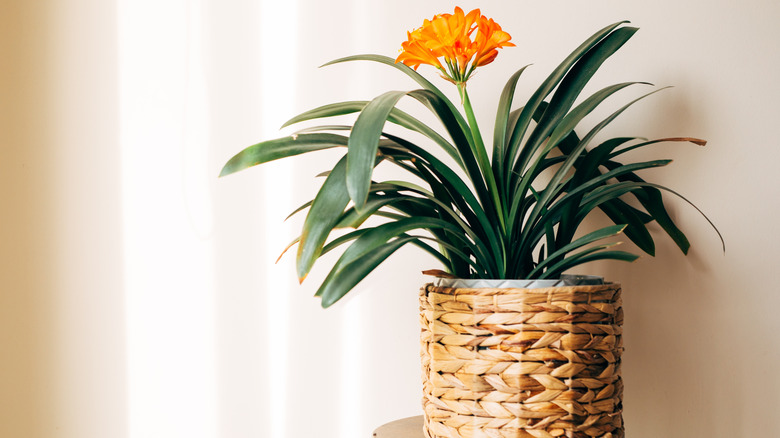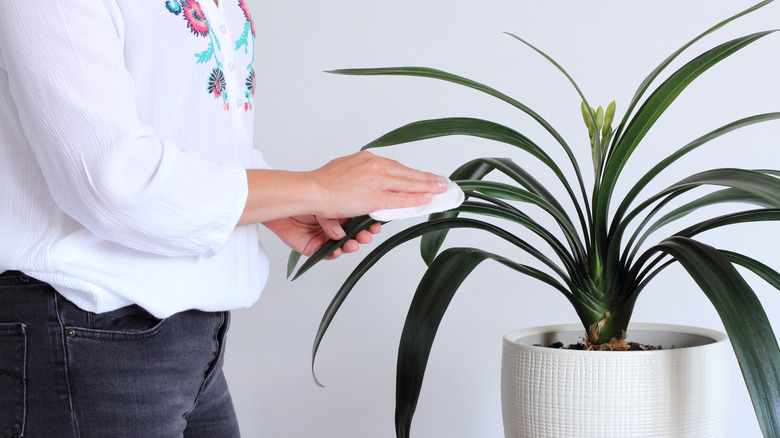What To Do If Your Clivia's Leaves Start Drooping
Clivia, commonly known as the bush lily, is a stunning plant with its wide, strappy leaves and its eye-catching clusters of orange or yellow blooms that appear on tall stems. This plant is an early spring bloomer and can grow in the shade outdoors in USDA zones 9 through 10. However, it's more commonly grown as a houseplant and revered for those vibrant flowers that will brighten up any space. If you don't already have one, you might be interested in some tips for growing clivia plants. Although these plants are generally trouble-free, you may experience drooping leaves. This can be the result of either underwatering or overwatering, and here's what you can do to fix the issue.
If your leaves are still green but there are some brown tips and you notice them drooping, the most likely cause is that the soil is dry and your plant is crying out for water. Test the soil with your finger or a moisture meter, and if it's dry down to around 2 inches, then your clivia needs water. The best solution is to take your plant to the sink and water thoroughly until the excess comes out of the drainage holes in the bottom of the pot. Wait for all this to drain away before putting your plant back in its spot. Don't be tempted to leave water in a saucer under the pot, as this is likely to result in root rot. This leads us to the possible problem of overwatering and what you can do to fix this.
How to fix your clivia's drooping leaves when the plant has been overwatered
If the leaves of your clivia are drooping and you also notice that they're going yellow, it probably means that your plant has been overwatered. This is one of the most common signs that you are overwatering you indoor plants and causing damage. It can be a problem for your clivia in winter because the plant is dormant and won't be taking up a lot of moisture. If overwatering is the issue with your clivia, the first thing you want to do is take it out of its pot and carefully remove any sodden soil from around the roots. Examine the roots and cut off any that are rotten and mushy, taking care not to damage the healthy ones. You can also cut off any yellowing leaves near the base as these won't revive.
Pot your clivia into some new mix that's fast-draining and hold off watering for a few days unless your potting soil is completely dry. If this is the case, it's best just to moisten the soil before potting up your plant. This should allow the healthy roots to grow into their new environment. From now on, only water your clivia when the top of the soil feels dry and keep this to a minimum in the colder months. While clivia is certainly a stunning plant on its own, you might want to add to its vibrancy by incorporation some other indoor blooming plants to brighten up your home.

